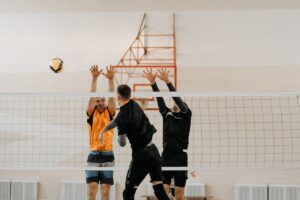In the fast-paced game of volleyball, players use various techniques to control the ball. The bump, also known as the pass, is essential for any player wanting to improve their skills and help their team succeed. This skill allows players to receive serves and set up plays, making it a crucial part of the game.
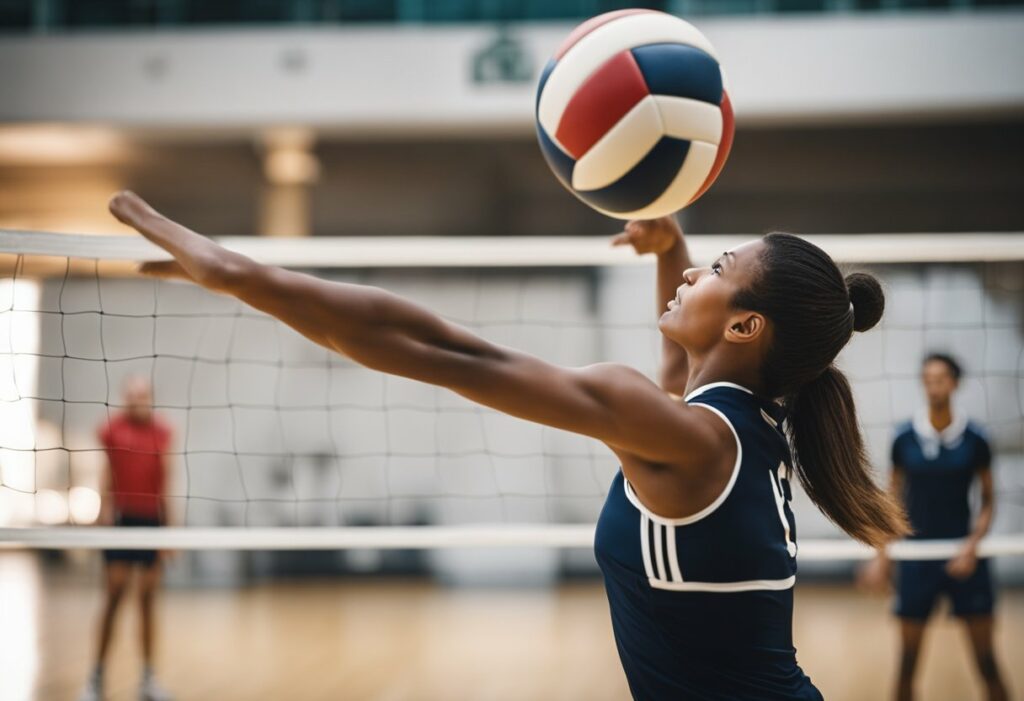
Mastering the bump can make a huge difference in performance. When done correctly, this technique helps maintain the rally and keeps the opposing team guessing. Players who excel at bumping can confidently take part in every match and boost their team’s chances of victory.
This article explores the bump in volleyball, detailing its importance and providing tips on how to execute it effectively. Whether a beginner or looking to refine skills, understanding the bump can elevate anyone’s game.
Definition of Bump in Volleyball
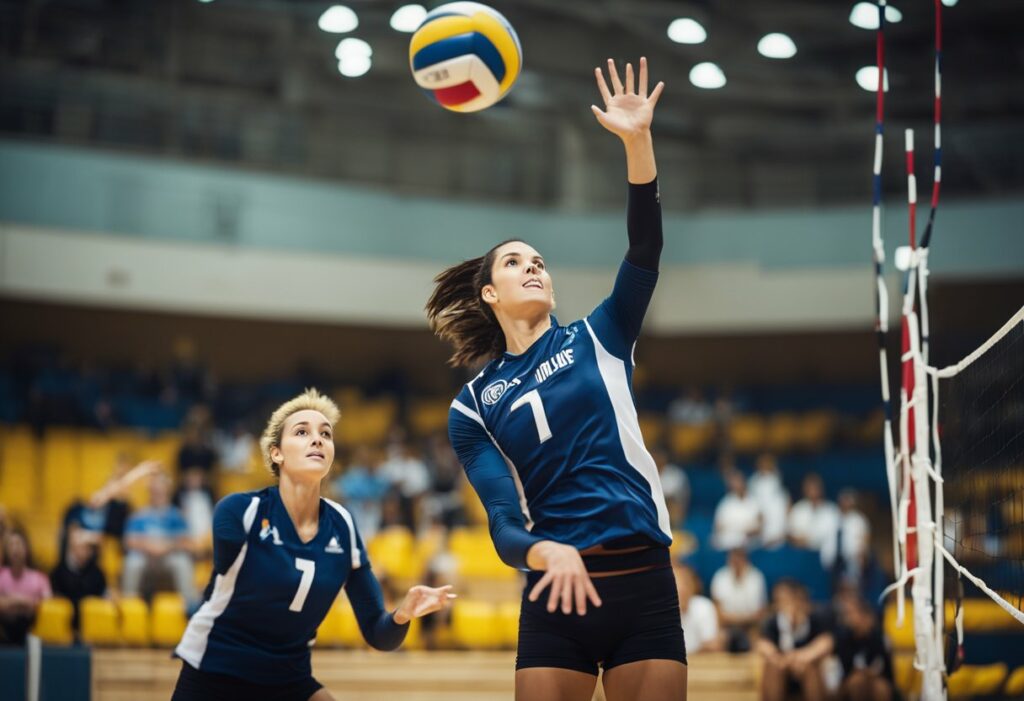
The bump is a key skill in volleyball. It is mainly used for passing the ball to teammates.
Players often use their forearms to create a flat surface. This helps to control the ball’s direction. A bump is also called a forearm pass.
How to Execute a Bump in Volleyball
- Positioning: Stand with feet shoulder-width apart.
- Forming the Platform: Lock the hands together. Keep the arms straight.
- Contact: Bend the knees to get low. Make contact with the ball using the forearms.
Practicing the bump helps players improve their passing accuracy. They should focus on watching the ball and moving into position.
Using proper technique makes a big difference in gameplay. A good bump can set up a strong attack for the team. This is why mastering the bump is so important!
In a match, players often use bumps to return serves or set up plays. The bump is simple but very effective. With practice, any player can get better at this fundamental skill!
How to Bump a Volleyball
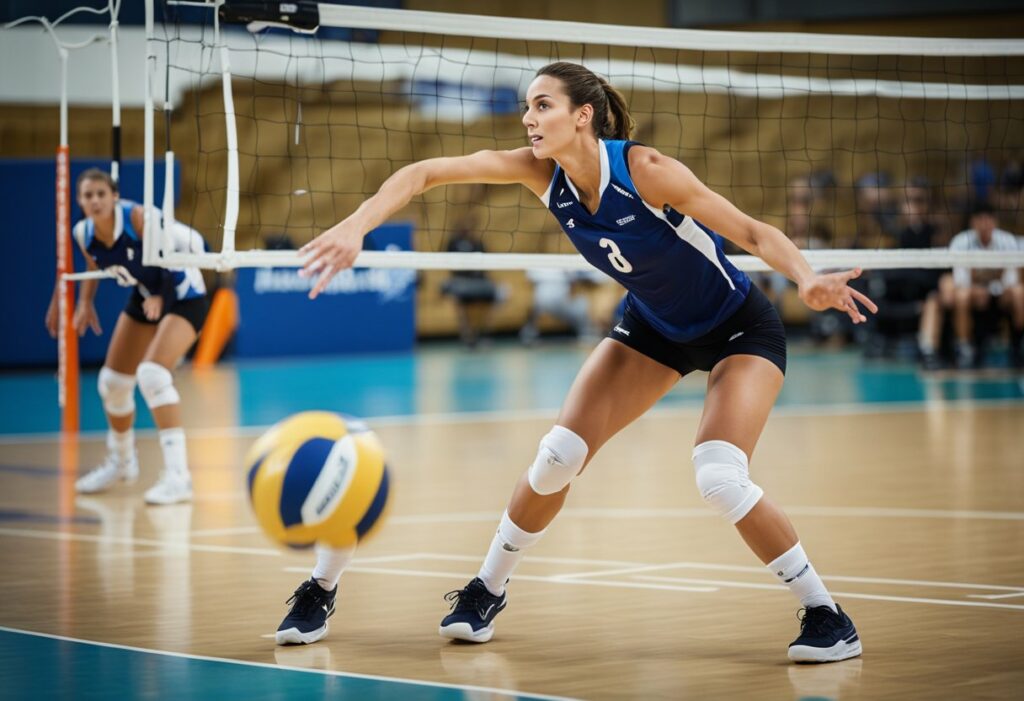
Bumping a volleyball is an essential skill for players. It involves proper body posture, arm formation, and footwork. Each part contributes to making an effective bump.
Body Posture and Positioning
Good body posture is the foundation of a successful bump. Players should stand with their feet shoulder-width apart. This stance helps maintain balance.
Bend the knees slightly and lean forward a bit. This position allows for quick movement. The player’s weight should be on the balls of their feet. It makes them ready to move in any direction.
Eyes should stay on the ball to track its path. Players need to be aware of their teammates too. This way, they can position themselves properly and communicate during play.
Arm Formation and Contact Point
For a solid bump, the arms must be aligned well. Players need to extend their arms and bring them together. The thumbs should touch each other, forming a triangle. This creates a flat surface for contact.
When the ball approaches, the player should aim for the forearms. The contact point should be just above the wrists. Players should keep their elbows locked and make sure their shoulders are squared to the net.
It’s crucial to follow through after contact. This means the arms should move upwards in the direction of the target. Proper arm formation helps control the ball’s direction.
Footwork for Optimal Bumping
Footwork plays a big role in bumping. Players must be light on their feet. It allows for quick adjustments as the ball comes towards them.
Step in the direction of the ball using small, quick steps. Always stay balanced. This balance makes it easier to move and get into position.
Using the right footwork helps create a stronger bump. Players can generate better power and precision. Practicing footwork drills can enhance overall performance during a game.
Types of Bumps in Volleyball
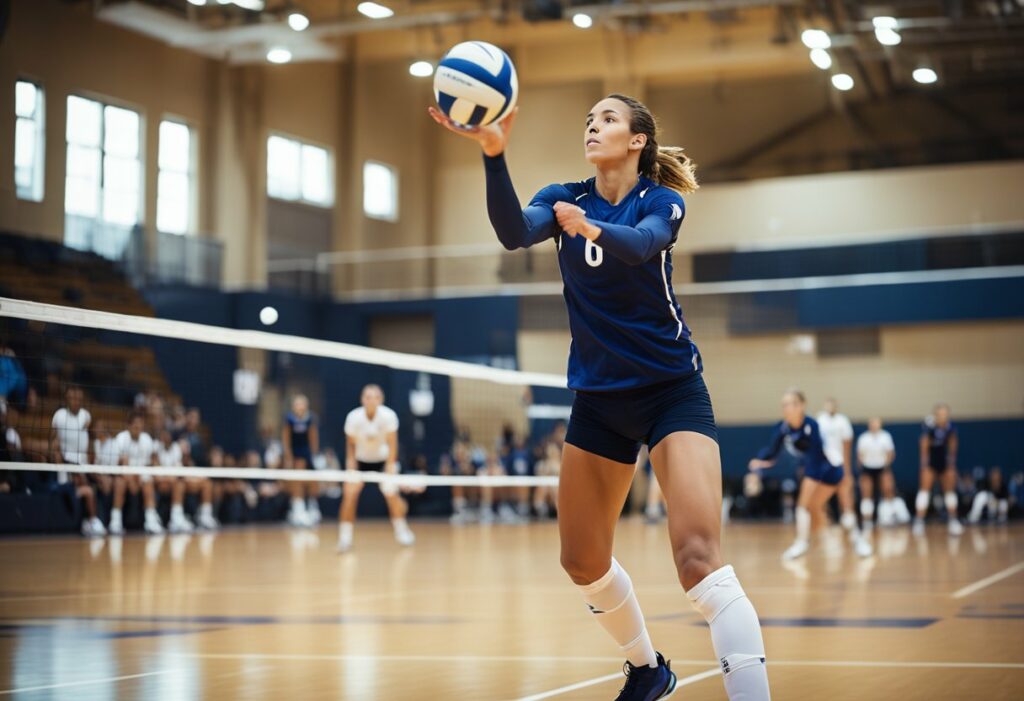
Bumping is a key skill in volleyball. The two main types of bumps are the forearm pass and the bump set. Each has a specific purpose and technique that players should master.
Forearm Pass
The forearm pass is often the first touch following a serve or a hard hit. It helps players accurately direct the ball to a teammate. To perform this pass, players should keep their hands together, forming a solid platform.
- Stance: Feet shoulder-width apart for balance.
- Arms: Extend arms forward, keeping them straight.
- Contact: Hit the ball with the forearms, not the hands.
This technique is critical for controlling the ball’s direction. Good body positioning and timing can lead to successful plays.
Bump Set
The bump set is used to set up a teammate for an attack. This skill involves using the forearms to lift the ball into the air. Players should focus on placement and height.
- Positioning: Move under the ball to create a stable base.
- Hands: Keep hands in front of the body, palms facing up.
- Lift: Use a gentle motion to push the ball into the air.
A great bump set allows for powerful attacks, making it essential during games. Mastering this technique can elevate team play significantly.
Mastering the Volleyball Bump
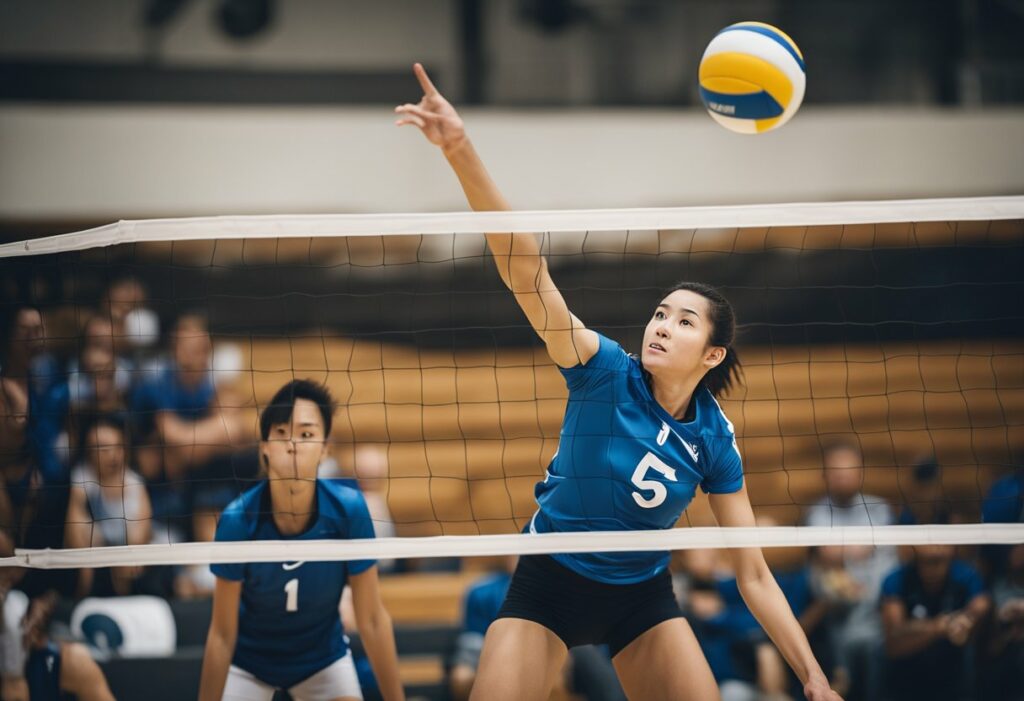
To excel at the volleyball bump, players need to focus on specific drills and common mistakes. Practicing these key points can bring improvement.
Drills and Practice Techniques
Repetitive drills are essential for mastering the bump. Start with the Basic Bump Drill. Players stand in a line and bump the ball back and forth. This helps with timing and accuracy.
Try the Wall Bump Drill next. Players face a wall and bump the ball against it, focusing on their form. They should aim for consistent contact with their forearms.
Also, practice the Target Bump Drill. Set targets on the court. Players should aim to bump the ball to these targets. This helps develop control and precision in their bumps.
Common Mistakes and Corrections
Many players struggle with proper hand positioning. A common mistake is making contact with open hands. Players should keep their hands together, forming a solid platform with their forearms.
Another mistake is bending at the waist. Players often lean too far forward, losing balance. They should keep their knees bent and maintain a low center of gravity.
Footwork is also vital. Players may stand still or shuffle, which affects their ability to hit the ball well. They should practice moving quickly into position before making contact.
By focusing on these areas, players can enhance their bump skills effectively.
Volleyball Bump: Rules and Regulations
The bump is a key skill in volleyball, but it comes with specific rules. Knowing what is legal and illegal helps players avoid mistakes on the court. Understanding the referee signals related to bumping is also essential for players and fans alike.
Legal vs Illegal Bumps
A legal bump or pass occurs when a player contacts the ball with their forearms. The player’s arms should be together, forming a flat surface. The ball mustn’t come from above the player’s head in a clean bump.
An illegal bump can happen if the ball is hit with open hands or if there is prolonged contact, called carrying. Players must avoid lifting or throwing the ball, as this can lead to a fault. Key points to remember include:
- Legal Bump: Use forearms, and arms together.
- Illegal Bump: Open hands or prolonged contact.
Referee Signals Related to Bumping
Referees use specific signals to indicate faults during play. When a bump is deemed illegal, the referee raises one hand and points to the infringing team. This signals a violation.
For a legal bump, the referee may simply blow their whistle without any additional hand signals. Understanding these signals helps players and spectators follow the game better. Referee signals are vital because they ensure fair play. Being aware of these signals can make a big difference during a match:
- Fault Signal: One hand raised, pointing to the team.
- Legal Play: Whistle blow only.
The Bump in Game Scenarios
The bump plays a vital role in various game situations. It helps players receive serves, defend against spikes, and transition quickly into offense. Understanding how to use the bump effectively can greatly improve a team’s performance.
Serve Receive
In serve receive, the bump is crucial for starting the play right. The player must position themselves to get under the ball. They should stand with feet shoulder-width apart and knees slightly bent.
The hands come together, forming a solid platform. This helps direct the ball accurately to the setter. Timing is essential here—players must watch the server closely to react quickly. A well-executed bump can turn a powerful serve into a strong attack.
Defensive Plays
During defensive plays, the bump is essential for handling incoming spikes. Players need to stay alert and ready to react. Positioning and footwork are key factors in setting up for a bump.
When an opponent spikes the ball, the player should take a few quick steps back to get into position. The arms should be raised, and hands must be sealed together. The goal is to absorb the impact while directing the ball to a safe area. This keeps the play alive and helps the team regain control.
Transitioning from Defense to Offense
Transitioning from defense to offense is where the bump shines. After executing a strong defensive bump, the player quickly looks for opportunities to set up an attack.
They need to call for the ball while staying aware of teammates’ positions. Effective communication is vital.
Once the ball is received, a clean bump can set up a perfect pass for the setter. This can lead to a powerful spike or a strategic set.
Timely transitions can put pressure on the other team and create point-scoring chances.

